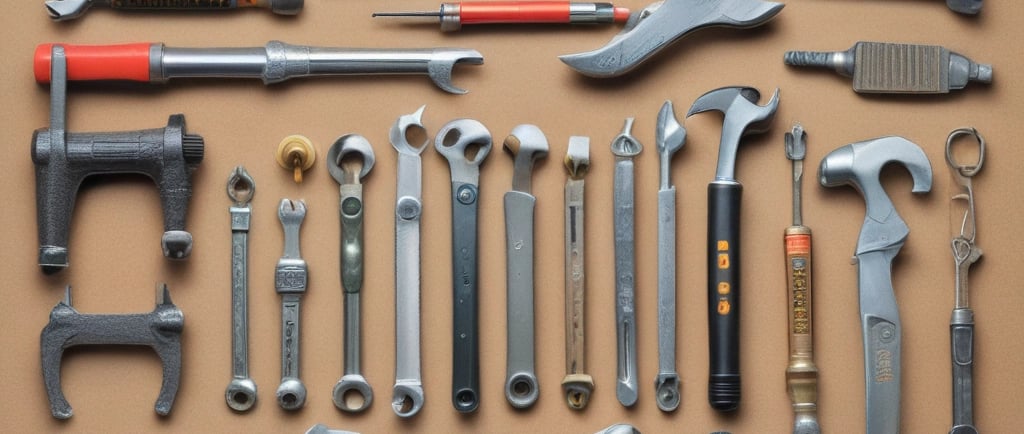How to Match Accessories to Your Tool Brand
11/10/20255 min read


Understanding Your Tool Brand's Aesthetic
Every tool brand carries its own unique aesthetic that reflects its identity and target audience. The colors, designs, and overall visual language of these brands contribute significantly to how they are perceived in the market. For instance, brands such as DeWalt are recognized for their bold black and yellow color schemes, which convey durability and industrial strength. On the other hand, brands like Bosch utilize a blue and green palette that can evoke a sense of precision and sophistication. An acute awareness of these visual cues can assist users in selecting accessories that not only match their tools but also amplify their overall persona.
To understand a brand's aesthetic, it is essential to analyze its logo, product designs, and packaging. Companies like Makita and Hilti have distinctive designs that resonate with a professional audience. Their tools often feature ergonomic handles and sleek designs intended for heavy-duty use, showcasing a blend of comfort and efficiency. Moreover, recognizing material choices—such as the use of metal versus plastic—can also provide insight into the brand’s message about quality and longevity.
Accessories should enhance the inherent qualities of the tools they accompany. For example, if one is using a Milwaukee tool known for its ruggedness and high performance, opting for accessories that share this robust design will create a harmonious look. Therefore, familiarity with the design language of your chosen tool brand plays a pivotal role in creating a cohesive aesthetic. By harmonizing accessories with the colors and forms inherent in your tool brand, you can establish a consistent and polished appearance, thereby elevating your tools' style while ensuring functionality. Understanding these elements ultimately serves to maximize the potential of both the tools and their supplementary accessories.
Selecting the Right Accessories
When it comes to maximizing the functionality and efficiency of your tools, selecting the right accessories is essential. Accessories serve not only to enhance the usability of your tools but also to create a cohesive look that reflects your chosen brand. A variety of accessories are available, including tool belts, storage solutions, and safety gear, each delivering its own set of benefits. Understanding which items align with your specific tool brand will ensure a seamless integration of aesthetics and performance.
Tool belts, for example, are indispensable for professionals and DIY enthusiasts alike. They provide easy access to essential tools while keeping hands free for other tasks. It is wise to choose tool belts that are designed specifically for the brand of tools you use; many manufacturers offer accessories that are tailored to their product lines, ensuring compatibility in size and functionality. This consideration guarantees that the tools fit securely and are easily accessible during use.
Storage solutions such as toolboxes, organizers, and shelving units are equally important. Selecting a storage option closely aligned with your tool brand not only optimizes space but also aids in maintaining an organized workspace. Look for storage options that feature the same durability and design ethos as your tools. Additionally, well-known accessory brands often produce products that complement major tool brands, making the selection process easier. For instance, if you own DeWalt tools, then searching for compatible storage solutions from leading brands like ToughBuilt or Plano would be beneficial.
In conclusion, selecting the right accessories enhances the effectiveness of your tools while reflecting personal style. By focusing on compatibility, functionality, and quality, one can ensure that their selection not only meets immediate needs but also aligns perfectly with their chosen tool brand.
Color Coordination and Material Matching
When it comes to accessorizing in alignment with a specific tool brand, the significance of color coordination and material matching cannot be overstated. The choice of colors is fundamental in establishing a cohesive look; selecting shades that either complement or contrast with the tools can enhance the overall aesthetic. For instance, if the tools are primarily in bold colors such as red or blue, opting for accessories in neutral shades like black, gray, or white can provide a balanced appearance. Alternatively, utilizing complementary colors can create a striking visual impact. Understanding the color wheel can aid significantly in this process, helping to determine which hues work symbiotically together.
In addition to color, the material used in both accessories and tools plays a vital role in brand representation. Typically, a tool brand may project an image of ruggedness and durability, reflected in accessories made of similarly sturdy materials. For example, pairing stainless steel accessories with tools crafted from the same material supports a consistent brand identity that signifies strength and reliability. Textures should also not be overlooked; accessories with a matte finish can convey a professional look when matched with tools featuring a similar texture, while glossy finishes may project a more modern and polished vibe. Thus, mixing materials requires thoughtful consideration to maintain brand integrity.
Moreover, effective mixing and matching of colors and materials can showcase an individual’s personal style while remaining true to the tool brand. One strategic approach is to choose a primary accessory that incorporates colors or materials from the tool itself, using secondary accessories to either highlight these features or introduce subtle contrasts for added depth. By understanding the dynamics of color and material in accessorizing, individuals can achieve a well-coordinated and stylish look aligned with their preferences and the ethos of their chosen tool brand.
Practical Tips for Accessorizing Your Tool Collection
Effectively integrating accessories into your tool collection not only enhances functionality but also elevates the aesthetic of your workspace. One of the fundamental steps in this process is implementing organization strategies. Consider utilizing toolboxes and organizers that align with your specific tool brand. This ensures a cohesive look while making it easier to locate tools and accessories when needed. For example, using a tool organizer from the same brand as your power tools can maintain a consistent aesthetic and extend the life of your tools by protecting them from wear and tear.
Showcasing your tools beautifully is another vital aspect. Utilize wall-mounted pegboards in complemented colors to your tool brand for displaying your tools along with their accessories. This not only makes them easily accessible but also transforms your workspace into a visually appealing area. Moreover, consider adding labels to your storage solutions, which can improve organization and streamline your work process. Such a setup also allows for easy identification and maintenance checks, ensuring that all accessories are accounted for.
When incorporating multiple accessories, it is essential to maintain aesthetic consistency. Stick to a uniform color palette or design theme that resonates with your primary brand, as this creates a harmonious appearance. Furthermore, exploring customization options can also elevate your collection. Many tool brands offer personalized accessories, such as engraved tool handles or custom color selections, which not only adds a unique touch but also fosters a deeper connection to your tools.
Lastly, adapting your tool accessories to seasonal trends can keep your collection fresh and relevant. Be on the lookout for new releases from your brand or innovative accessory ideas that can contribute to both functionality and style. Embracing these practical tips will allow you to maximize the impact of your tool accessories while ensuring a cohesive and attractive tool collection.
